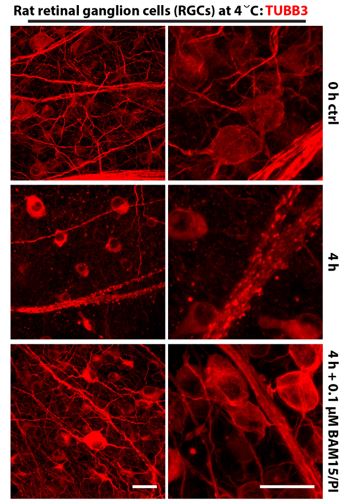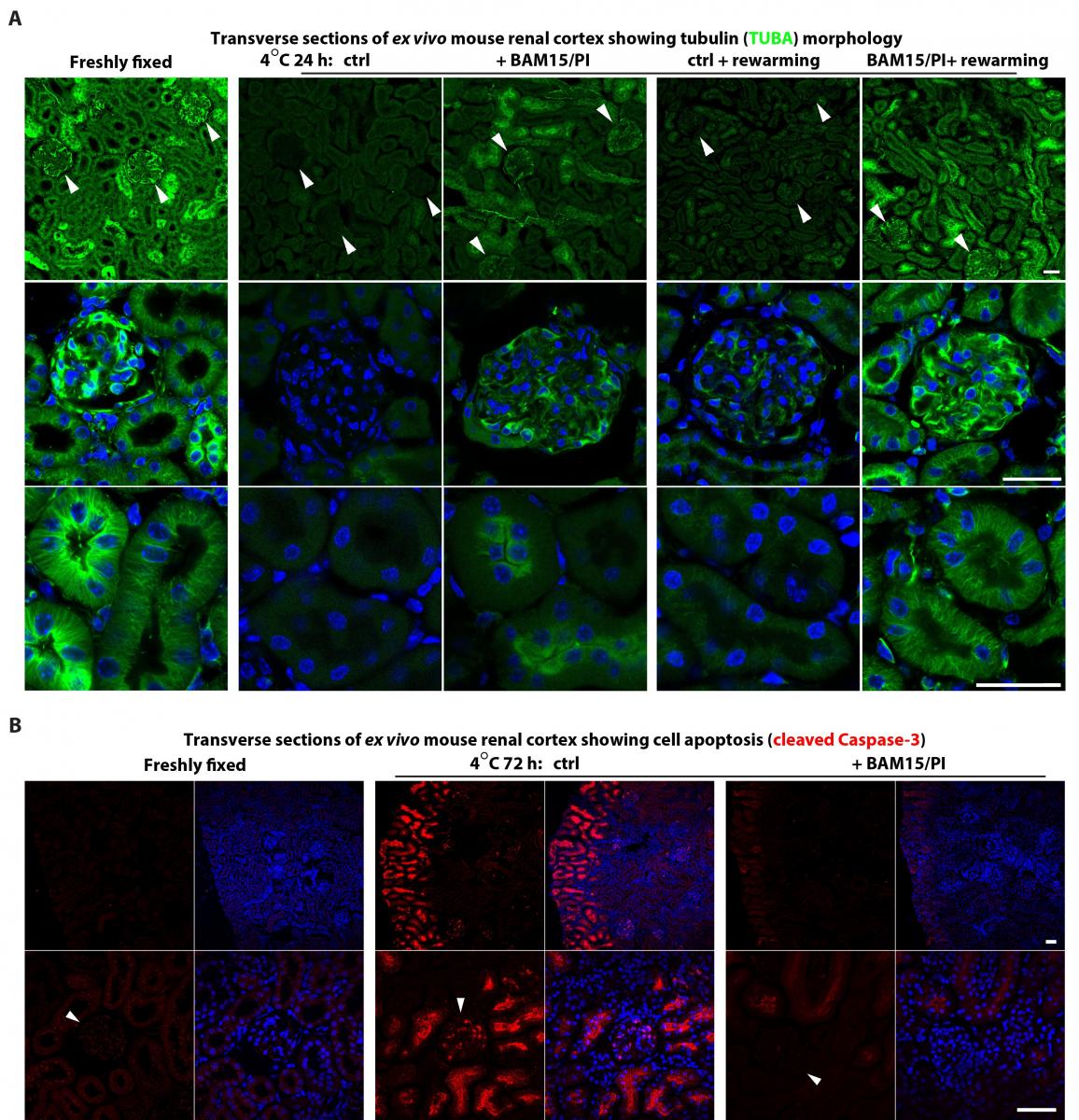Strategies to Protect Mammalian Neural Tissue Against Cold and Potentially Other Metabolic Stresses and Physical Damages
Researchers at the National Eye Institute (NEI) have discovered an invention describing a composition and method(s) of using such composition for preserving viability of cells, tissues, or organs at a low temperature (around 4ºC). Current cold storage solutions or methods for cells, tissues, and organs are suboptimal due to irreversible damage to cold-sensitive tissue or organ transplants that need a longer term of storage for facilitating clinical practices. In addition to mitigating this damage, the new method may be potentially used in therapeutic hypothermia for protecting neural injury or trauma, or for enhancing neuronal survival from axonal damage and degeneration.
The invented composition, which was inspired by the inventors’ hibernation mechanism studies using their ground squirrel induced pluripotent stem (iPSC) cells, contains a mitochondrial uncoupling agent that reduces mitochondrial oxidation and thus protects tissues or organs from cold stress. The invention can be either used alone or may supplement other types of preservation reagents. The new composition represents an improved one as compared with currently available commercial preservation products for certain tissue types, such as Optisol™-GS corneal storage solution or CoStorSol® cold storage solution that is the current standard for liver and kidney transplantation.
The NEI inventors seek licensees and/or to collaborate with commercial partners to develop the new composition into preservation products that can be used in research or variable clinical practices such as therapeutic hypothermia, transplantation, and physical neural injuries.
The figure below shows pretreatments with the invented storage solution preserved cellular morphology and functions of retinal ganglion cells following 4-h cold storage:

The figure below shows pretreatments with the mitochondrial inhibitor Bam15 and/or protease inhibitors (Pi) preserved microtubule morphology following 24-h cold storage and 2-h rewarming, and reduced cell apoptosis following 72-h cold storage:

Competitive Advantages:
- This invented cold storage solution employs newly discovered mechanism for preserving cell or tissue viability under cold stress, thus improving preservation efficacy
- This new cold storage solution represents a better choice owing to its innovative concept in preservation, compared with current commercially available products, for enhanced preservation efficacy and prolonged storage of cold-sensitive cells, tissues, or organs, which include primary neural tissues, hepatocytes, kidneys retinas, etc.
- This new solution can be used as supplements into other current research- or clinical-grade of reagents for a variety of applications that demand induced cold tolerance
Commercial Applications:
- Preservation storage solutions for extended preservation of cold-sensitive tissues or organs for research or medical procedures
- Medical product(s) that can be used in therapeutic hypothermia for treating neural injury or trauma
- Medical product(s) that can be used for directly treating neural injury or trauma
